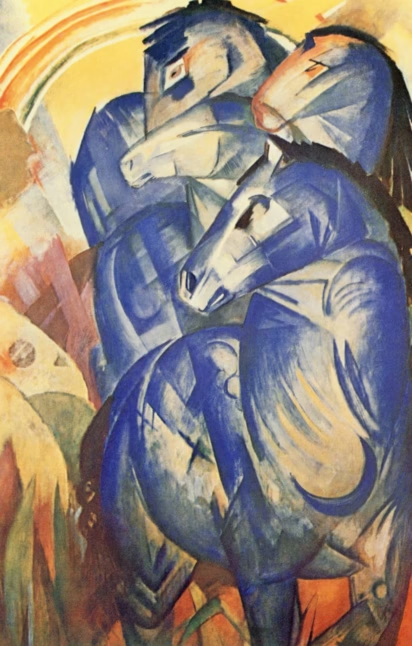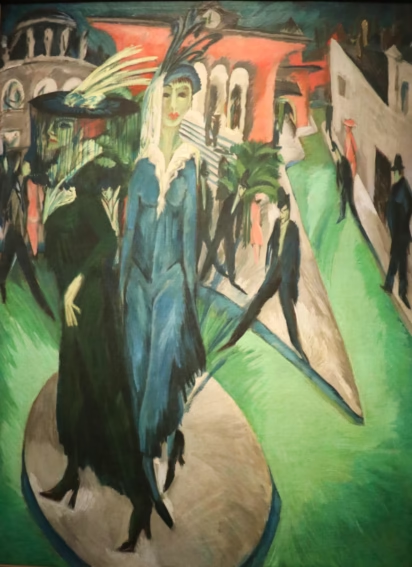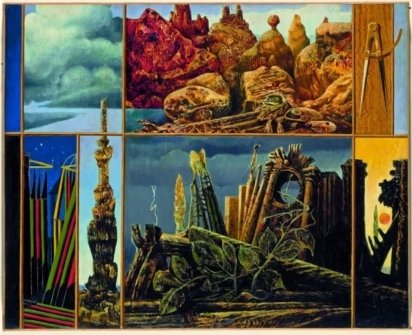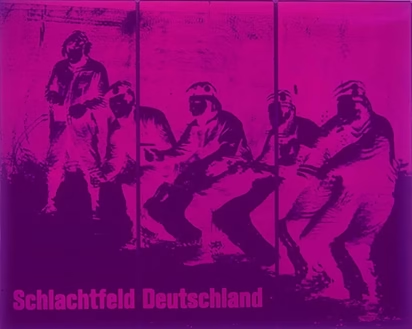Although completion is still a good five years away, the Berlin Modern, the new museum for the National Gallery’s 20th-century art collection, has announced new exhibition plans and ideas for the Nationalgalerie in Kulturforum.
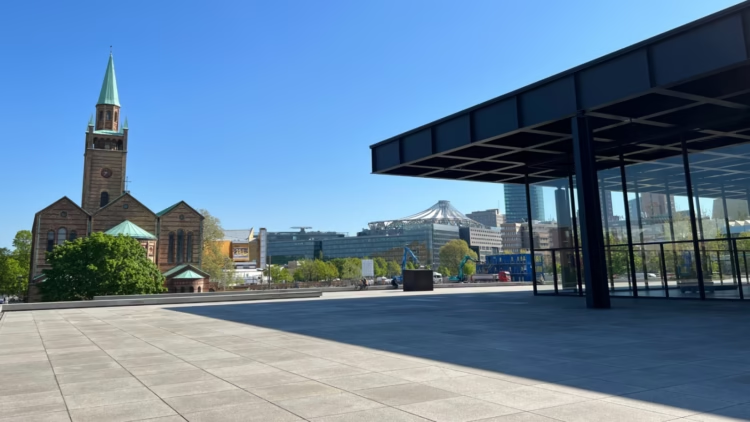
Berlin is reshaping its cultural heart with the ambitious new Berlin Modern museum rising at the Kulturforum beside the iconic Neue Nationalgalerie. When finished around 2030, the two buildings will operate as one museum — the Museum of 20th-Century Art — bringing Berlin’s modern masterpieces into a shared home at Kulturforum. While construction continues and temporary exhibitions fill the Neue Nationalgalerie, the Berlin State Museums have already revealed exciting plans for how the permanent collection will take shape.
Berlin Modern — Museum of 20th-Century Art
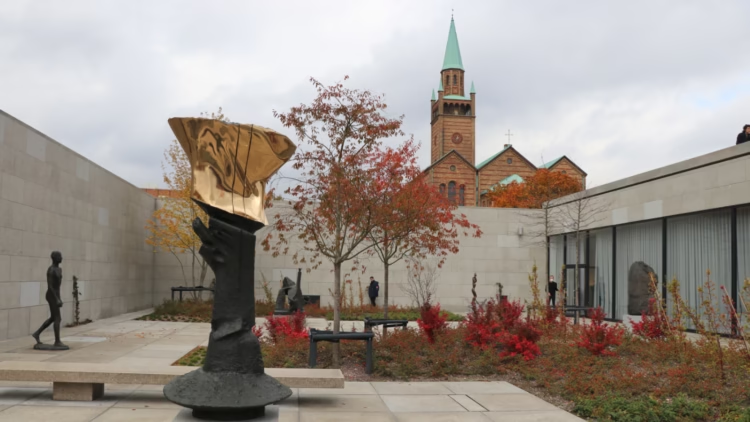
Despite the upheavals of the 20th century and the turbulent history of Berlin in particular, the Berlin State Museums’ National Gallery owns one of the world’s largest collections of modern art. Currently, highlights are in the Neue Nationalgalerie, which with over 600,000 annual visitors, is the most popular art museum in Berlin.
The construction of the adjacent Berlin Modern marks a milestone in uniting the city’s 20th-century artistic legacy at the Kulturforum. When completed, around 2030, it will quadruple the exhibition space available for the Nationalgalerie’s modern art collection.
The Museum of 20th-Century Art will consist of two buildings: Mies van der Rohe’s iconic glass-and-steel Neue Nationalgalerie and the new Berlin Modern building designed by Herzog & de Meuron. Together they will present the Nationalgalerie’s 20th-century holdings in their full breadth, for the first time bringing together works that were previously spread across several institutions (with many works in storage).
What’s in a name? “berlin modern” (daringly uncapitalized!) is currently used for the new museum building under construction at Kulturforum. It will share the Sammlung zur Kunst des 20. Jahrhunderts (Collection of 20th-Century Art) with the adjacent Neue Nationalgalerie (New National Gallery). It could end up with the rather practical name Museum für die Kunst des 20. Jahrhunderts (Museum of 20th-Century Art Museum). Berlin’s contemporary art museum is somewhat confusingly the Hamburger Bahnhof.
Berlin Modern — An Open House for Everyone

© SMB, Nationalgalerie / Thomas Bruns, © VG Bild-Kunst, Bonn 2021
With its integration of art, design, film, and architecture, Berlin Modern aims to present the story of 20th-century art in a way that feels alive, relevant, and open to all. The project is not merely about housing a collection—it’s about creating a living space where people engage with art as part of daily life, debate social and political issues, and participate in cultural exchange, both physically and digitally.
The concept of social sculpture, developed by Joseph Beuys, serves as a guiding idea for the project. Beuys’ monumental installation Das Kapital Raum 1970–1977 (currently in the Hamburger Bahnhof) will form the spiritual and conceptual centre of the new museum, symbolizing art as a shared social practice. This notion will be embodied not only in the artworks themselves but also in the museum’s design—through participatory spaces, open forums, and accessible programs.
Modern Design for Modern Exhibitions

Berlin Modern is envisioned as a “community space”—an inclusive house of art open to all. The central atrium, with its sweeping staircase and light-filled design, will function as both a gathering place and a stage for performances, concerts, and international art projects.
At the street level, a glass-fronted area will host participatory programs inspired by Joseph Beuys’ concept of social engagement, offering opportunities for visitors to interact and collaborate. Two art-in-architecture projects will further enhance the public space: Rirkrit Tiravanija’s untitled (pad thai vs khao soi), a food truck serving daily Thai dishes, and Cyprien Gaillard’s installation In the Hands of Morpheus, combining sculpture and video at the museum’s cinema entrance.
Large exhibition spaces on the ground floor will be used for temporary exhibitions, while the permanent collections will be displayed in the basement and on the upper floor. As a modern, purposedly designed museum building, it would hopefully be a more practical and easier-to-use space than the iconic Mies van der Rohe glass-walled hall.
The Collection: 20th-Century Art in Context
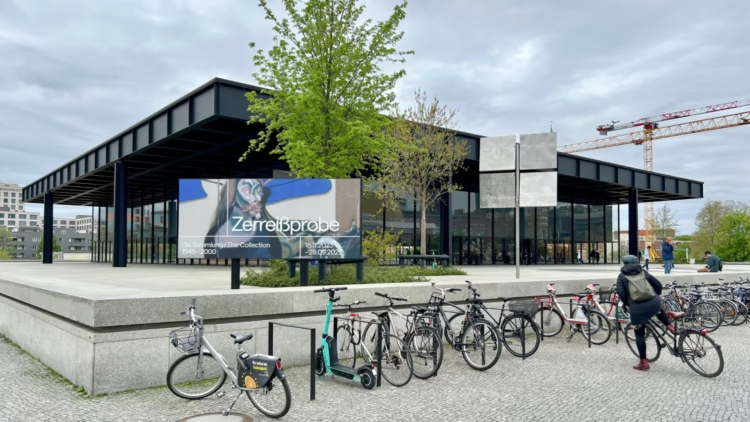
The completion of the Berlin Modern will for the first time ever give the city a single location large enough to explore the story of 20th-century art in full continuity. Currently, the main semi-permanent exhibitions in the Neue Nationalgalerie cover only half a century: Zerreißprobe / Extreme Tension, art from 1945 to 2000, runs until 2027, while the temporary exhibitions change more frequently.
The plan is to use the Neue Nationalgalerie mainly for art from the first half of the century, especially classical modern painting and sculpture. The Berlin Modern will cover art from the second half of the 20th century with special presentations of open art forms after 1960, such as conceptual art, happenings, performance, film, and video.
Together, the two museums will create a dialogue between movements and media. Exhibits from the Kunstbibliothek (Art Library) and the Kupferstichkabinett (Graphics Collection) will complement the collection, adding depth through works on paper, photography, and design. Some artists, including Joseph Buys, will also have to start moving from the Hamburger Bahnhof Museum of Contemporary Art to the more historical collections.
A Mirror of the 20th Century
The Nationalgalerie’s 20th-century art collection is deeply intertwined with German history. In the 1920s, Berlin’s Galerie der Lebenden (Gallery of Living Artists) became a pioneering showcase of modern art. However, the Nazis suppressed modern art throughout Germany in the 1930s. The losses suffered through the “Degenerate Art” campaign were profound — the Nationalgalerie alone lost over 500 works.
Following the war, curators attempted to rebuild the collection despite the division between East and West Berlin. This dual heritage, shaped by two political systems and later reunited after 1989, continues to define the museum’s character.
The National Gallery’s collection focuses on German Expressionism, French Cubism, Surrealism, colour field painting, art in the GDR, US and international Western art after 1960, film and media art from the 1970s to the 2000s, and a series of large-scale installations.
Among the artists represented in the Nationalgalerie collection with particularly large groups of works or important individual works are Marina Abramović, Francis Bacon, Max Beckmann, Joseph Beuys, Hanne Darboven, Otto Dix, Isa Genzken, Rebecca Horn, Lotte Laserstein, Wolfgang Mattheuer, Bruce Nauman, Barnett Newman, Gerhard Richter, Barbara Kruger, Katharina Sieverding, and Andy Warhol.
When the doors of Berlin Modern open, Berlin will gain not only a new museum but a living reflection of the city itself—its history of extremes, its creative resilience, and its continuing dialogue between art and society.
Planned Permanent Exhibition of 20th-Century Art in Berlin

Although the opening of the museum of 20th-century art in Berlin is still more than five years away, the Nationalgalerie has indicated its thinking regarding the permanent exhibition.
The plan is to create an open-ended exhibition that begins with classical modernism in the Mies van der Rohe building, continues in berlin modern with the art of Dada and Surrealism, and extends to the diverse artistic developments at the end of the 20th century. The chronology and references to individual central art movements are intended to serve as rough points of orientation.
The aim is not to present a purely aesthetic history, but rather to review the diversity of 20th-century art from various perspectives, always in close connection with political and social history.
Nationalgalerie Fantasy Tour of 20th-Century Modern Art in Berlin
The Staatliche Museen zu Berlin released a tour of the planned themes and works for the permanent exhibition of the Nationalgalerie’s Museum of 20th-Century Art. Given that most of the works are already in the National Gallery’s collection, this is no idle fantasy. The suggested highlights (including *planned loans from other collections) would be something like this:
European Modernism:
In Paris, Moscow, Milan, Munich, and Berlin, new forms of artistic expression emerged almost simultaneously, ranging from Cubism, Expressionism, Orphism, and Futurism to the first forms of abstraction.
- Paula Modersohn-Becker: Kniende Mutter mit Kind / Kneeling Mother with Child (1906)
- Edvard Munch: Lebensfries / Frieze of Life (1906/07)
- Pablo Picasso: Femme assise dans un fauteuil (1909)
- Natalja Gonscharowa: Die Uhr / The Clock (1910)
- Alexej Jawlensky: Frauenkopf / Head of a Woman (1912)
- Ernst Ludwig Kirchner: Potsdamer Platz (1914)
(Impressionism and 19th-century art are in the Alte Nationalgalerie on Museum Island.)
World War I and the 1920s:

The First World War led to far-reaching upheaval and change, which had a profound impact on the art of the period. In addition to the major works on war and the new beginning after 1919, depictions of current events, documentary photos, digital formats, and contemporary artistic reflections are also important for conveying this historical upheaval.
Works in the collection that provide information about the democratic aspirations and associated struggles in the Weimar Republic are of particular significance. Another focus is on international emancipation movements and their impact on everyday life, such as the new role of women or queer perspectives in the 1920s.
- Hannah Höch: Schnitt mit dem Küchenmesser Dada… / Cut with the Dada Kitchen Knife… (1919)
- George Grosz: Stützen d. Gesellschaft / Pillars of Society (1926)
- Annie Albers* (1899-1994)
- Meret Oppenheim* (1913-1985)
- Karl Blossfeldt* (1865-1932)
- Christian Schad: Sonja (1928)
- Lotte Laserstein: Abend über Potsdam / Evening over Potsdam (1930)
- Otto Dix: Flandern / Flanders (1934)
- Charlie Chaplin: Moderne Zeiten / Modern Times (1936)
National Socialism / Exhibition “Degenerate Art” (1937)

The documentation of the exhibition “Degenerate Art” is important today because it reminds us of the suppression and defamation of modern art by the Nazi regime. It shows how totalitarian regimes can suppress culture and art, and emphasizes the importance of artistic freedom and diversity.
- Rudolf Belling: Dreiklang / Triad (1919/1924)
- Lovis Corinth: Das Trojanische Pferd / The Trojan Horse (1924)
- Hannah Höch* (1989-1978)
- Franz Marc: Turm der blauen Pferde / Tower of Blue Horses (1913/1914, missing)
World War II:
The destruction wrought by the Second World War II and the megalomania and cruelty of National Socialism are important focal points. It is also important to include the Holocaust in the collection chronology of berlin modern and the Neue Nationalgalerie, both in terms of documentation and critical reflection, but also in terms of artistic processing.
- Horst Strempel: Nacht über Deutschland / Night over Germany (1946)
- Lee Miller* (1907-1977)
- Alice Lex Nerlinger: Feldgrau schafft Dividende / Field Grey Creates Dividends (1931)
Hiroshima / Nagasaki (1945):
The atomic bombings of Nagasaki and Hiroshima serve as a memorial to the destructive power of modern technology and the profound consequences of war. Artistic works that reflect on the suffering, destruction, and survival stories of this catastrophe can help to make the emotional and ethical dimensions of this moment tangible. Documentary materials and artistic reflections complement this section to illustrate the significance of this event for humanity.
- Lee Bontecou: Ohne Titel / Untitled (1960)
- Wifredo Lam: Les Noces (1947)
- Helen Frankenthaler* (1928-2011)
- Lygia Clark* (1920-1988)
Exile:
The modern artists who had to leave Paris, Berlin, and other places in war-torn Europe often settled in New York, but also in other metropolises of North, Central, and South America. In particular, in the Neue Nationalgalerie, in the central room formerly known as the ‘American Hall’, the abstraction of the post-war years has been presented in great detail. This historical peculiarity of the Nationalgalerie should be complemented by other modernist positions, for example, from Central and South America.
- Gego* (1912-1994)
- Ibrahim El-Salahi* (*1930)
- Max Ernst: Painting for Young People (1943)
- Fahrelnissa Zeid* (1901-1991)
Division of Europe: Construction of the Berlin Wall (1961):
Always central in German and European history and art, the division into competing ideologies east and west from ca. 1945 to 1990 is well represented in works from both sides.
- Sibylle Bergemann* (1941-2010)
- Barbara Klemm* (*1939)
- Wolfgang Mattheuer: Bratsker Landschaft / Bratsk Landscape (1973/74)
- Rainer Fetting: Van Gogh und Mauer V / Van Gogh and the Wall (1978)
- Allan Kaprow*: Sweet Wall (1968)
East / West:
In the 1970s and 80s, the two artists Joseph Beuys and Andy Warhol were perceived in Germany as two extremes of cultural difference, between the extremely capitalist system of the United States on the one hand and the more ecologically and socially democratic concept of art in Germany on the other. This juxtaposition of Beuys and Warhol is also reflected in the collection, as both are represented with important works. This historical tension between the US and Europe, as perceived in Germany, is also reflected in the collection, particularly in the two central works, Mao and The Capital Space 1970–1977.
- Andy Warhol: Mao (1972)
- Willi Sitte: Hommage à Lenin (1969)
- Joseph Beuys: Das Kapital Raum 1970-1977 / The Capital Space 1970–1977 (1970-1977)
- A.R. Penck: Die Zukunft der Emigranten / The Future of the Emigrant (1983)
- Angela Hampel: Medea (1985)
- Martin Kippenberger: Put Your Freedom in the Corner (1990)
- Eva Hesse* (1936-1970)
Free Europe:
The signing of the Treaties of Rome (1957) marked the beginning of closer cooperation between the countries of Western Europe. This increased European understanding and community influenced art in many ways, particularly in the cross-border art of Informel, the Fluxus movement, and also in the neo-expressive “Transavanguardia.”
- Jean Fautrier: Remous (1958)
- Judit Reigl: Center of Dominance (1959)
- Emil Schumacher: Blau Dominierend / Dominated by Blue (1958)
- Maria Lassnig: Patriotische Familie / Patriotic Family (1964)
- Mary Bauermeister* (1934-2023)
- Wolf Vostell: Elektronischer dé-coll/age Happening Raum / Electronic Dé-coll/age, Happening Room (1968-1982
- Sandro Chia: Genova (1980)
- Enzo Cucchi: Quadro Tonto (1982)
Departure and emancipation:
The student, women’s, and emancipation movements of the 1960s brought about social and cultural upheavals. This intellectual and artistic upheaval is appropriately documented in the collection’s chronology through art, wall texts, and contemporary documents.
- Marina Abramović: Rhythm 0 (1972)
- Martha Rosler* (1943*)
- Hanna Wilke* (1940-1993)
- Hanne Darboven: Menschen und Landschaften / People and Landscapes (1985)
- Yayoi Kusama* (1929*)
- Katharina Sieverding: Schlachtfeld Deutschland / Battlefield Germany (1978)
- Wim Wenders*: Der Himmel über Berlin / Wings of Desire (1987)
- Lina Bo Bardi* (1914-1992)
German reunification:
The fall of the Berlin Wall marks the end of the division of Germany and stands for freedom, new beginnings, and the overcoming of political and social barriers. Artistic positions that reflect the transformation of East and West Germany could make this historical moment tangible. For example, through works that address the Berlin Wall or those that show the social and cultural upheaval of reunification.
- Rebecca Horn: Raum des verwundeten Affen / Room of the Wounded Ape (1990)
- Christoph Schlingensief: Deutschlandsuche / Searching for Germany (1999)
- Louise Bourgeois* (1911-2010)
- Rosemarie Trockel* (1952*)
- Pipilotti Rist* (1962*)
- Olafur Eliasson*: Beauty (1996)
- Monica Bonvicini*: Hammering Out (an old argument) (1998)
Turning point and radicalization:
September 11, 2001, changed the world. Thus, the “Twin Towers”, which are almost unrecognizable in Gerhard Richter’s work, as well as the work Re-enactments by Francis Alÿs, which anticipates terror, are central examples of works that visualize this decisive end of the 20th century. With further radicalizations, such as the right-wing extremist underground movement NSU in Germany, a turning point is emerging.
- Francis Alÿs: Re-enactments (2001)
- Zaha Hadid* (1950-2016)
- Katharina Fritsch* (1956*)
- Gerhard Richter: Birkenau (2014)
- Atlas Group / Walid Raad: Already been in a Lake of Fire (2002)
- Thomas Demand: The Gate (2004)
Contemporary and 21st-Century Art in Berlin

The National Gallery owns and stages large exhibitions of 21st-century and contemporary art in the huge Hamburger Bahnhof — National Galerie der Gegenwart. It is one of the world’s largest permanent venues for contemporary art and several concurrent temporary exhibitions are competing for attention.
For some artists, including the oddly-popular Joseph Buys, time is catching up. Once hailed as the vanguard of contemporary art, their works are now viewed instead as milestones of late 20th-century history. Many works currently (or recently) seen in the Hamburger Bahnhof will soon enough end up at Kulturforum, including Das Kapital Raum 1970–1977, which will be positioned centrally in the Berlin Modern.
The Hamburger Bahnhof generally has a very active cultural program too, with many free events.
Kupferstichkabinett and Kunstbibliothek in Berlin
The Kupferstichkabinett (Graphic Arts Collection) with 25,000–30,000 works of art will be present in berlin modern with a significant part of its collection. This makes it clear that art on paper was of outstanding importance throughout the entire era: in times of war, oppression, upheaval, economic recovery, and emancipation, drawing and printmaking were always a special means of expressing freedom of thought.
The Kunstbibliothek (Art Library) will use approximately 650 square meters in berlin modern for its own collection exhibitions. From here, it will create networks with all the arts that continue to change and shape the reality of life today, from architecture, fashion, and photography to communication design. A special attraction will be the exhibition depot, which will display significant large-format works of modern poster art in varied constellations.
More on the Berlin State Museums (Staatliche Museen zu Berlin):
Note new opening times for many Berlin museums in 2025 — several are now closed on both Monday and Tuesday.
Timeslot reservations are sensible (and sometimes needed in busy periods) for the Alte Nationalgalerie, Gemäldegalerie, Neue Nationalgalerie, Neues Museum, and Pergamon – Das Panorama. (The Pergamon Museum itself is closed until 2027!). Timeslots are released only a few weeks in advance. Online tickets are available from GetYourGuide or SMB.
Many passes and multi-museum tickets offer savings (Kulturforum / Museums Island). Individual museum ticket prices range from €8 to €14 (€20 for special exhibitions). Online tickets are skip-the-line — go directly to the gallery entrance to scan the code.
For more general information on the Berlin State Museums:
- Top National Museums and Galleries in Berlin (brief overview)
- Berlin State Museums: What Is Seen Where? (a short description of the collections in the different museums)
- Opening Hours of Berlin State Museums (2025) — major changes since mid-April 2024!
- Ticket Prices for Berlin State Museums (prices for museums, temporary exhibitions, combination tickets, online time-slot reservations). Buying online from GetYourGuide is easy. A ticket with a QR or bar code is scanned directly at the entrance — no need to pass by the ticket desk (but pick up the free audio guide before entering).
- Save with the Berlin Museum Pass – 30 museums (including all the SMB museums) in three days for €32 – a fantastic savings deal.
- Staatliche Museen zu Berlin (official website in German & English).
News & Temporary Exhibitions in Berlin in 2025:
- 2025: Top Special Art Exhibitions in Berlin in 2025 & Top Contemporary Art Exhibitions in the Hamburg Bahnhof.
- Museums closed in 2025: The Pergamon Museum is closed until 2027 (some sculptures are on display in Das Panorama), the Museum Berggruen is closed until 2026 (much of its collection is traveling the world), the permanent collection of the German History Museum (Zeughaus) is closed but temporary exhibitions continue in the Pei Building.
- 2030s: Berlin Modern to share the Museum of 20th-Century Art with the Neue Nationalgalerie on Kulturforum.
More Museum Reviews and Museum-Specific Information:
- Alte Nationalgalerie — 19th-century art.
- Altes Museum — Greek, Etruscan, and Roman art.
- Bode Museum — sculptures from the Middle Ages, Gothic, Renaissance, Baroque, and Classical periods, Byzantine Art, and coins.
- Ethnological and Asian Art Museums in the Humboldtforum.
- Friedrichswerdersche Kirche (free admission) with a collection of 19th-century German sculptures.
- Gemäldegalerie — German and Dutch Old Masters and Italian paintings.
- Kunstgewerbemuseum (Decorative Arts).
- Musical Instruments Museum near the Berliner Philharmonie.
- Neue Nationalgalerie — 20th-century art.
- Neues Museum — Pre and Early History, Egyptian Collection with bust of Nefertiti.
- Pergamon Museum with Ishtar Gate — the whole Pergamonmuseum is closed from 2023 until 2027. Some Greek sculptures are shown in the
- Pergamon Museum Panorama Exhibition with Asisi panoramic painting and Greek statues.
- Photography — Helmut Newton collection and historic photos.
Previous Temporary Exhibitions in Berlin Museums:
- 2024: Overview of Top Berlin Exhibitions in 2024, Caspar David Friedrich in the Alte Nationalgalerie, Frans Hals in the Gemäldegalerie, Neue Nationalgalerie (20th-century art), Hamburger Bahnhof Contemporary Art, Kupferstichkabinett (Prints and Drawings), and Photography Museum.
- 2023: Top Special Temporary Exhibitions in 2023 — overview, in the Kulturforum, in the Neue Nationalgalerie, on Museum Island, and the Museum of Photography.
- 2022: Top Special Temporary Exhibitions in 2022 — overview, in the Kulturforum (David Hockney), in the Neue Nationalgalerie, on Museumsinsel, Hamburger Bahnhof contemporary art, and the Museum of Photography.
- 2021: Top Special Temporary Exhibitions in 2021 — including the reopening of the Neue Nationalgalerie, as well as the Ethnological and Asian Art Museums in the Humboldt Forum.
- 2020: Highlights, in Kulturforum, on Museum Island, in the Hamburger Bahnhof, smaller museums, and the opening of the Humboldt Forum.
